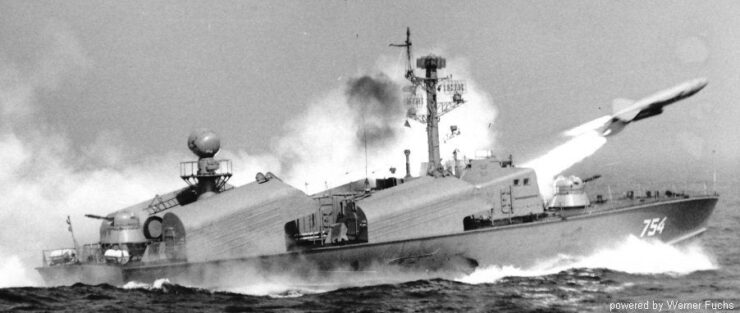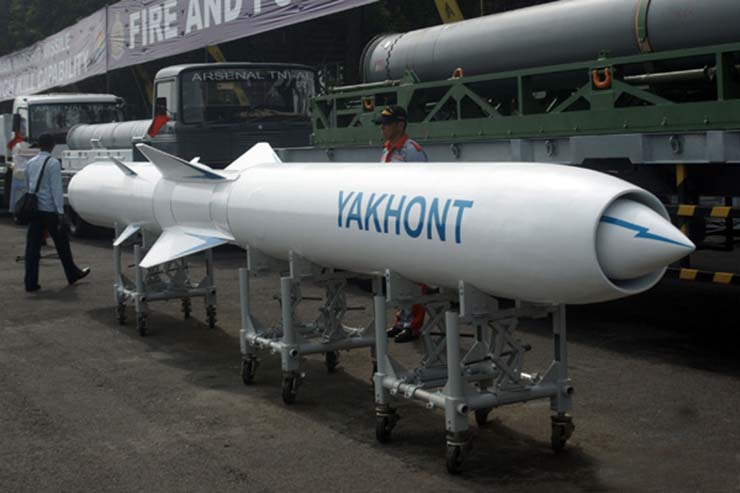 Admiral Sergei Gorshkov was arguably the greatest naval strategist of the 20th century. In his book, ‘The Sea Power of the State’, the man who transformed the Russian Navy into a global force, wrote: “Naval warfare aimed directly against land targets will play an ever greater part in any future major conflict.”
Admiral Sergei Gorshkov was arguably the greatest naval strategist of the 20th century. In his book, ‘The Sea Power of the State’, the man who transformed the Russian Navy into a global force, wrote: “Naval warfare aimed directly against land targets will play an ever greater part in any future major conflict.”
On the night of October 5, 2015, four Russian missile boats with a displacement of a mere 1,000 tons each started raining cruise missiles down the throats of ISIS and US-backed terror groups. Flying at treetop level over a distance of 2,600 km through Iran and Iraq, and avoiding populated areas, the missiles slammed into terrorist hideouts without warning. The missiles killed hundreds of Islamic terrorists and scattered ISIS from its bases.
The success in the Syrian war is nothing new for Russian missile boats. These vessels were star performers during the 1967 Arab-Israeli War and the 1971 India-Pakistan War. In the official history of the Indian Navy, Transition to Triumph, Vice Admiral GM Hiranandani writes:
“In June 1967, during the six-day Arab-Israeli War, an Egyptian missile boat sank an Israeli frigate, the Eilath, at a range well beyond the frigate’s own guns. Navies all over the world woke up with a start to the effectiveness of this new Russian weapon – the surface to surface, anti-ship, homing missile – which enabled a small boat to sink a ship several times its size within a matter of minutes. At one stroke, this new weapon altered the centuries old concept of prolonged gun battles between opposing warships.”
With a displacement of 200 tons, the missile boats were tiny and extremely thin skinned, but they had powerful engines that could propel them to a blistering 34 knots. Plus, the boat was hard to spot because of its small radar cross-section.
Hiranandani explains: “Its sophisticated radar was more advanced than any other known radar – it enabled the missile boat, with its low radar reflectivity, to detect a larger ship well before the latter was even aware of its presence, to fire its missiles and to speed away faster than any other ship. The Russian naval architects had deliberately designed these characteristics so as to give the small boats this advantage against much larger American naval ships attempting to attack the Russian coast.”
From UK to Russia
The Indian Navy, which had until then relied on Britain for its ships and weaponry, now started looking at Russian naval equipment. The Egyptian strike had clearly got the naval brass’ attention. But there was another reason for India wanting these small vessels.
In the 1965 India-Pakistan War, the tiny Pakistan Navy had conducted a sneak attack on the city of Dwarka on the Gujarat coast. Although there were no casualties and only a solitary cow was killed, it left the Indian Navy seething because it couldn’t respond with a fitting counter attack.
India’s political leadership had ordered the navy not to launch offensive operations north of Porbandar because of Indonesia’s aggressive postures against India. Jakarta had not only declared support for fellow Muslim nation Pakistan, but more worryingly it was vocal about its intentions to annex the Andaman & Nicobar Islands that lie close to South East Asian waters.
The shells lobbed at Dwarka got the navy brass thinking of a possible Pakistani attack on Mumbai in a future conflict. In his book We Dared: Maritime Operations in the 1971 Indo-Pak War, Vice-Admiral SN Kohli writes: “Intelligence had suggested the Pakistan Navy was considering the acquisition of missile fitted frigates. In order to forestall the dangers of a missile attack by Pakistan on Mumbai, I had, on one of my visits to Russia, enquired from Admiral Sergei Gorshkov whether they had a mobile missile battery which could be deployed for the defence of Mumbai. He replied in the negative. He was later able to persuade the Indian Navy that for the defence of Mumbai and other major ports, the small Osa class of missile boats would be ideal. Their mere presence would prove a great deterrent to the enemy embarking on an attack.”
Admiral Gorshkov’s advice was simple and effective. In January 1969, an Indian delegation visited Moscow and the Russian naval base in the Caspian Sea, where they went out to sea in a missile boat. Vice-Admiral Nilakanta Krishnan writes in his book ‘No Way But Surrender’ that the acquisition of attack missile boats had become a “personal obsession” for him. The delegation signed an agreement for the acquisition of a squadron of eight boats armed with Styx missiles.
The Osa boats arrived under complete secrecy in 1970. They were based in Mumbai while crew training and ship overhaul facilities were to be located in Visakhapatnam. Admiral Hiranandani writes: “By this time, the Russian Navy had come to realise the Indians were diligent learners and professionally far more confident than the navies they had earlier helped to train. The crews…were deputed to Russia for just six weeks to take over the ships and sail them back to India. The Russians were impressed with their efficiency and professional knowledge, considering that they had neither received any training in Vladivostok nor had adequate training facilities been set up in Visakhapatnam.”
Russian Boats, Indian Ingenuity
Like Admirals Kohli and Krishnan, Admiral Sardarilal Mathradas Nanda, India’s navy chief in 1971, had been smarting under the step-motherly treatment shown towards the navy by the political leadership. He was determined the Indian Navy wouldn’t sit out the next war.

A few weeks before the war started, he called his directors of naval operations and naval intelligence, and said he had obtained clearance for an attack on Karachi. In his autobiography, ‘The Man Who Bombed Karachi’, Nanda writes: “Everybody looked at me and said Karachi is a very heavily defended port. They’ve got six inch guns, while our guns are only four inch. We will be well within their range before they come into our range. So I said we have these Russian-made Osa class missile boats with Styx missiles.”
The commanders weren’t very keen. They said the boats did not have the range to reach Karachi and return. Secondly, though the Styx was highly accurate, they were anti-ship missiles and not designed to attack shore targets. Some naval officers – probably of the Gandhian mould – objected on the grounds that if Indian missiles hit Karachi, then there would be an international uproar over civilian casualties.
Admiral Nanda threw all such objections into the sea. Like all great ideas, his was simple too. To overcome their short range, he towed the boats from their base in Mumbai to Diu in Gujarat, which was a short distance from the target.
On the night of December 4, 1971, the missile boats carried out their first attack on Karachi. However, one of the vessels reported seeing a Pakistani aircraft and radioed this wrong information to the Indian flotilla. Worse, the captain of this missile boat withdrew from the designated area without the permission of the flotilla commander, thereby causing considerable confusion.
Only a couple of missiles were launched towards Karachi. Despite their hasty withdrawal the boats sank two Pakistani warships and crippled a third. They also destroyed a Pakistani merchant vessel bringing ammunition from an American depot in Saigon. Had the missile boats released all their missiles, the destruction could have been massive.
The Indian Navy launched a second attack on Karachi on the night of December 8. This time, it lost one ship but the rest rained hell on Karachi, setting fire to the tanker farms and lighting up the entire night sky.
In November 1971, at a press conference in Jamnagar, Admiral Nanda had said: “And if war comes again, I assure you that we shall carry it right into the enemy’s biggest ports, like Karachi. I know this harbour quite well for I started working there. And you have my word that given the opportunity, the Indian Navy will make the world’s biggest bonfire of it.”
Admiral Nanda made good on his promise – Karachi burned for a week.
Small Is Big Now
Small missile boats equipped with long-range missiles can be a game changer in war. For, besides being potent, they offer great bang for your rupee. Large capital ships like aircraft carriers and destroyers can project force, but small missile boats can sneak in and create mayhem in the enemy’s coastal cities and ports.

Russia has supplied anti-ship and land attack missiles to a number of countries including India, Vietnam, Algeria and China. The success of the Kalibr (export version Klub) will result in the export of even more potent versions of the missile. There are few known defences against this class of missile. The Kalibr, for instance, makes a supersonic sprint towards its target during the last few kilometres, making interception a futile task.
Again, the Oniks missile (export version Yakhont) is fired in groups that act like a wolf pack. When launched, the missiles wait until the last one is out of the launch tubes and then line up, just like a wolf pack, and begin to home in on their prey. Swapping information, the pack decides which missile attacks which target and how.
The beauty of a Kalibr or an Oniks is that even if they don’t completely destroy a large vessel like an aircraft carrier, a single hit will ensure enough damage to put the ship out of commission for months.
The small warship is thus a great equaliser.
–The writer is a globally cited defence analyst. His work has been published by leading think tanks, and quoted extensively in books on diplomacy, counter terrorism, warfare and economic development. The views expressed are personal and do not necessarily reflect the views of Raksha Anirveda








